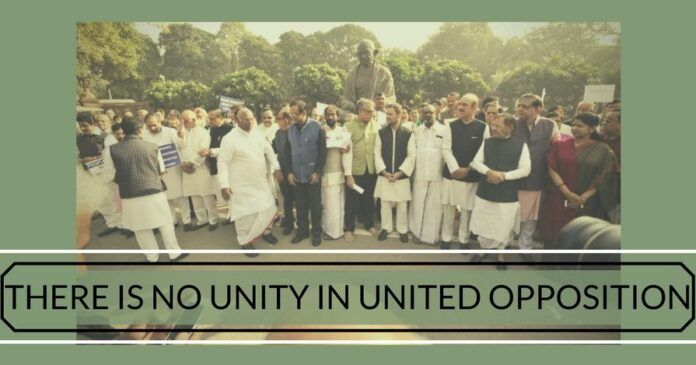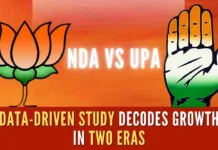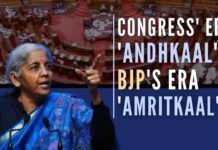
The two kinds of united opposition being talked about are Congress-led opposition and non-Congress-led opposition
Every time rivals get electorally drubbed by the Bharatiya Janata Party, which has been quite often in the last four years, the tantalizing prospect of opposition unity is revived. But only in words since nothing tangible emerges out of the grand idea. Now too, after the BJP swept the Assembly election in Tripura and ensured that it would be part of the Governments in Meghalaya and Nagaland, a sense of deja vu in the unity narrative has returned.
The irony in the talk of opposition unity is that there is no unity over a united opposition. For instance, there are two kinds of united opposition being talked about. The first is a Congress-led opposition and the second is a non-Congress-led opposition. Former Congress president Sonia Gandhi has invited a bunch of opposition party leaders for confabulation on the road ahead. While some parties are willing to discuss the possibility, they are reluctant to accept Congress president Rahul Gandhi as the overall leader and prime ministerial face. This is understandable given the Congress chief’s dismal track record.
The non-Congress-led anti-BJP alliance has had a name historically — Third Front
Besides, regional parties that are sought to be roped in by the Congress as part of a grand alliance have strong leaders of their own who have national ambitions of their own. It is difficult to imagine the likes of Mamata Banerjee or Naveen Patnaik or Mayawati to play a subordinate role to Rahul Gandhi. Those such as Sharad Pawar of the Nationalist Congress Party had issues with even Sonia Gandhi being projected as the Prime Minister. Though the NCP has over time diluted its opposition, it is not certain if it will endorse Rahul Gandhi’s leadership of a grand alliance, now that Sonia Gandhi is out of the picture.
The non-Congress-led opposition prospect too has faced inherent obstacles, the primary among them being the issue of leadership. If the powerful regional satraps have had problems with Rahul Gandhi’s leadership, they have similar reservations over one another too. Why would Mamata Banerjee work under the leadership of, say, Naveen Patnaik? Or Mayawati under the umbrella leadership of Mulayam Singh Yadav?
It is these intricacies that have ensured that opposition unity gets nowhere. Now, Telangana Chief Minister K Chandrashekhar Rao is working on an outreach to cobble non-Congress/non-BJP parties together as part of a national alliance. He may have received encouragement from the likes of the West Bengal Chief Minister, but others who appear to back him are marginalized political figures such as Ajit Jogi and Hemant Soren of the Jharkhand Mukti Morcha, who bring a very limited appeal to the table.
As if these were not enough problems, there is the Left Front. Nobody knows where it stands: With a Congress-led alliance or a non-Congress-led coalition. The Left supported the Congress-led UPA in Prime Minister Manmohan Singh’s first term but withdrew support thereafter. It fights the Congress in States such as Kerala but plays a different card in West Bengal. The confusion among the comrades is deep, and this has virtually divided the Left leadership. There is the Prakash Karat camp which is opposed to any kind of alliance with the Congress at the national level, and there is the Sitaram Yechury group which favours just the opposite. The Left debacle in Tripura has strengthened the Yechury camp’s drive for an alliance or at least an understanding with the Congress to checkmate the BJP’s growing influence, but the old warhorses are unwilling to bend.
The non-Congress-led anti-BJP alliance has had a name historically — Third Front. This so-called Third Front (also the United Front), ruled from New Delhi for short terms and with disastrous results in the 1990s. It gave the country two Prime Ministers, HD Deve Gowda, and IK Gujral. The VP Singh Government was that of the National Front, but it was different, because it was supported by the BJP (besides the Left) from the outside and was thus not really an anti-BJP coalition. Today, the Third Front has become a pejorative term to indicate opposition failures in unity.
United Opossition has lack of a compelling narrative as an alternative to the BJP.
Realising that a grand pan-India alliance to take on the BJP could take ages, parties have been experimenting with more modest methods. In the 2017 Uttar Pradesh Assembly election, the Congress and the Samajwadi Party came together but were soundly beaten by the BJP. Mayawati’s Bahujan Samaj Party was comprehensively defeated too. Now, Mayawati has decided to back her arch rival Samajwadi Party’s candidates in the two Lok Sabha by-elections from Phulpur and Gorakhpur constituencies. This is being interpreted by observers as a tentative step by the BSP to tie up with the Samajwadi Party to contain the BJP.
Besides, the issue of leadership, there are two other reasons why a united opposition has not materialised or caught the imagination of the voters. The first is the lack of a compelling narrative as an alternative to the BJP. And the second is the absence of a glue minus the dislike of the BJP that can bind the parties together. Anti-BJP-ism is not permanent, as we have seen in the case of Nitish Kumar’s Janata Dal (United). Besides, alliances do not always bring about a consolidation of votes. It didn’t happen in Uttar Pradesh in 2017. Ground realities are different. For instance, it is far from given that the Scheduled Caste voters of the BSP will transfer their votes to the SP candidate in the coming by-elections. The near animosity between the Yadavs (backed by the SP) and the Scheduled Castes is known to those who follow Uttar Pradesh politics.
Notwithstanding all the previous failures, the clamour for a united opposition will grow multi-fold if the BJP manages to retain Madhya Pradesh and Rajasthan, which vote for new Assemblies later this year; and if the BJP snatches Karnataka from the Congress earlier on.
Note:
1. The views expressed here are those of the author and do not necessarily represent or reflect the views of PGurus.











Jayasankarji, I UPVOTE your comment but disagree with your observation – ‘opposition unity is a mirage and not going to materialize soon’. I foresee a ‘kichdi alignment’ of ‘unscrupulous political parties’ very soon – with a pressing need to protect themselves (rather than any ideological urge.). Because a second term to Modi is an ‘imminent jail yatra’ to ‘didis’, ‘behenjis’, ‘netajis’ and ‘pappus’ etc.
Complacency will make BJP lose 2019.
They are alreday losing the by polls.
Opposition Unity is a mirage and it is not going to materialise in the near future. Nor will it produce a leader of calibre, strength, character, competence and resoluteness in implementing the well defined policies in the interest of the Nation. They are all Aayaa Rams, Gayaa Rams. Static political policy is not a virtue, more so in a coalition era. These disgruntled elements are like a cluster of gooseberries tied in a gunny sack. Once untie the sack, it will roll around hither and thither. The present Opposition leaders are like that. As the saying goes, there is no permanent friends or permanent enemies in Politics, but permanent interest – i.e.power & pelf for self alone – is there. In the present juncture, if the BJP wins Karnataka Assembly poll in April 2018, then PM – Modi may opt for early Lok sabha polls by Dec,’2018 combined with Rajasthan, Madhya Pradesh, Chattishgarh to come back with thumbing majority with more than 350 LS MPs. PM Modi should keep his eyes and ears wide open and maintain an eagle eye on maintaining Price levels of essential commodities, keeping close watch on BSE / NSE that no sabotage / scams takes place by unscrupulous stock market players. He should also display considerable progress Clean Ganga project, ensuring time bound completion of sagar mala projects, linking of peninsular rivers and ensuring availability of water for drinking & irrigation purposes for all Southern States, last but not the least ” construction of Shri Ram Mandir in Ayodhya and complete integration of J&K with Indian dominion by removing Art 370 / 35-A through a Presidential Order” as promised in BJP’s Election Manifesto of 2014. I hope he will certainly deliver and come out with flying colours.